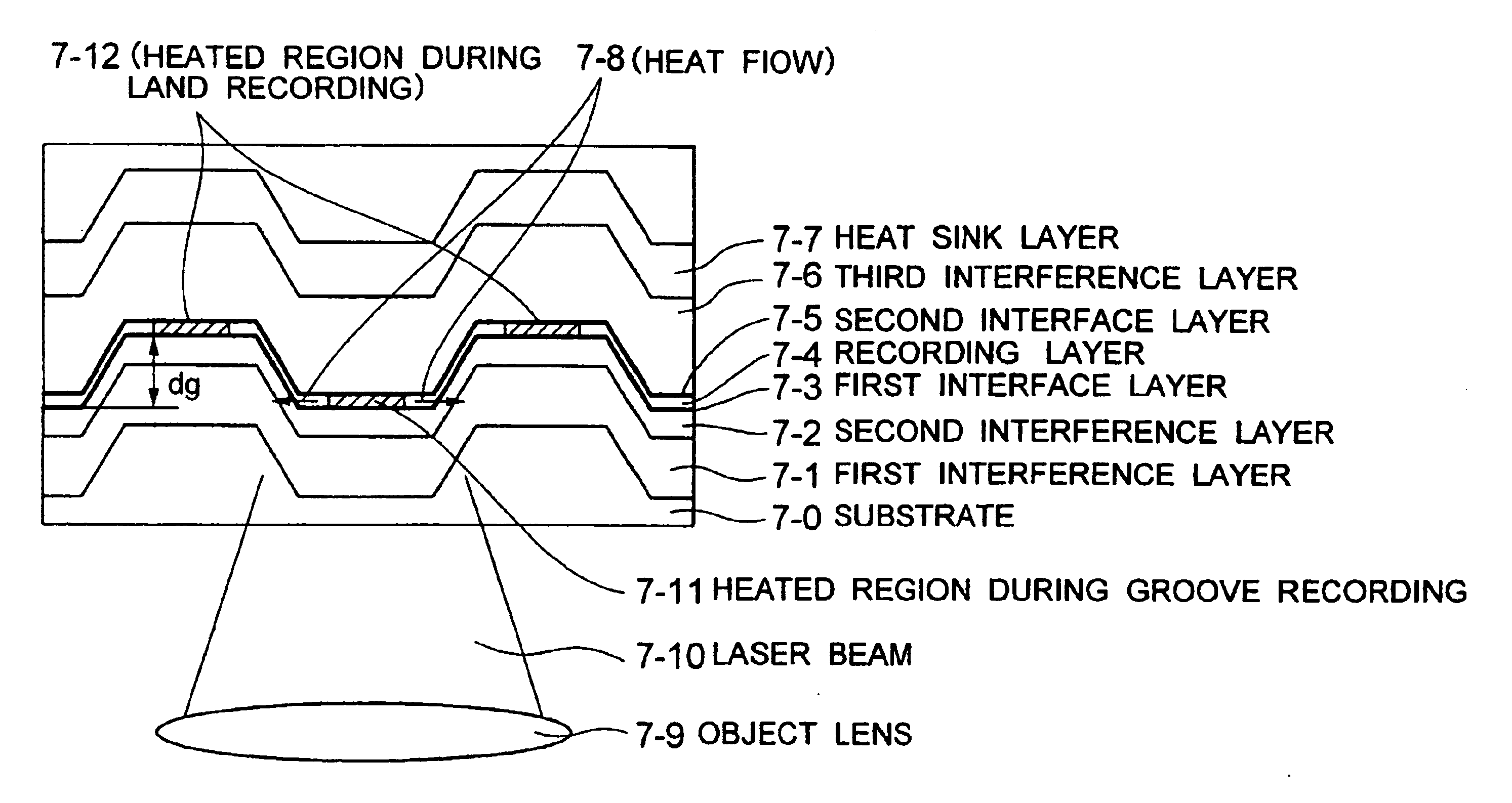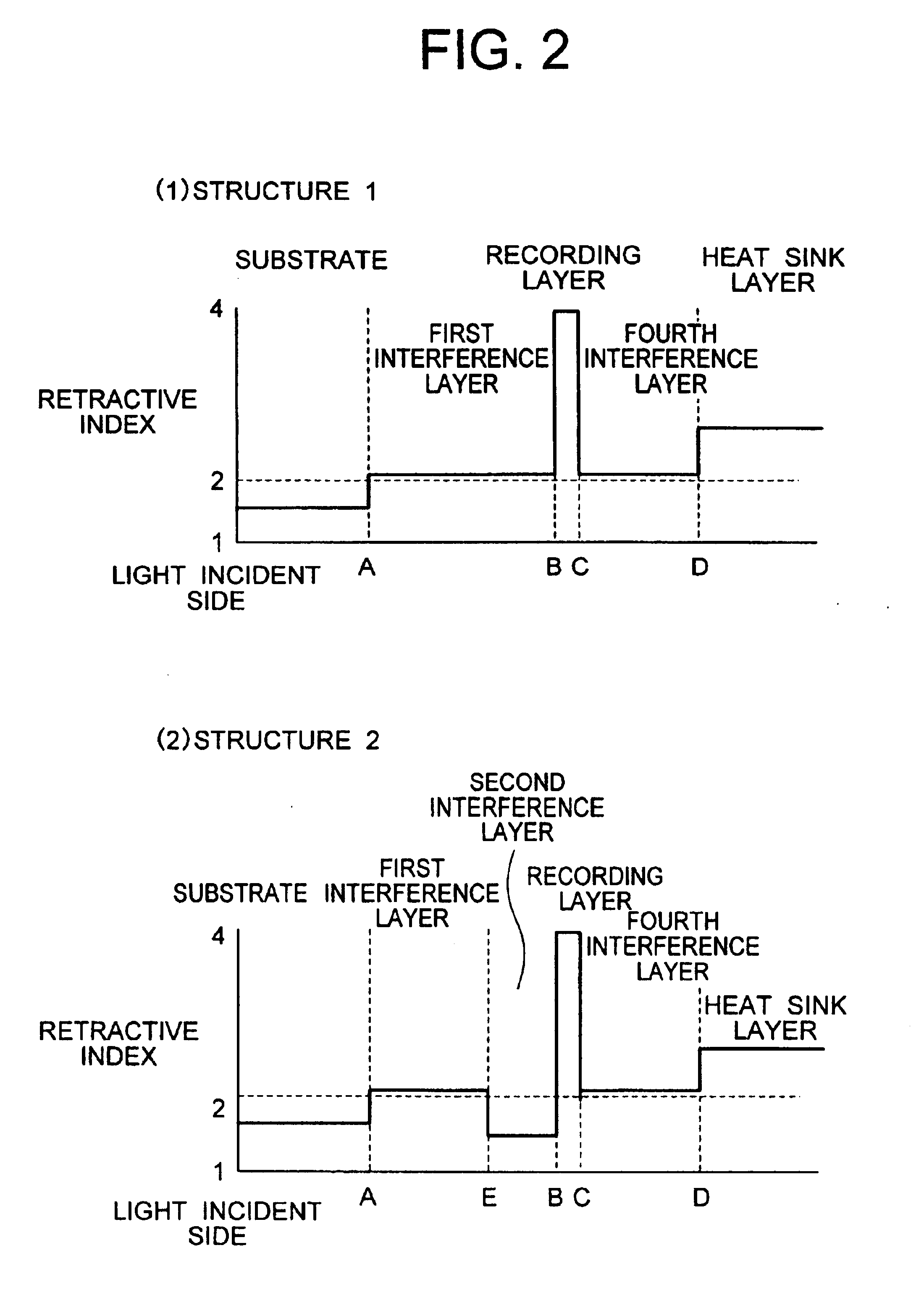Information recording medium
a technology of information recording and information, applied in the field of information recording medium, can solve the problems of many problems that remain to be solved, the suppression of cross-erase is critical, and the 2.6 gbdvd-ram has not yet satisfied the requirements of users in the aspect of recording capacity
- Summary
- Abstract
- Description
- Claims
- Application Information
AI Technical Summary
Benefits of technology
Problems solved by technology
Method used
Image
Examples
Embodiment Construction
The present invention will be explained in detail with reference to the following embodiments thereof.
FIG. 1 shows a basic construction of an information recording medium according to the present invention. A first information recording member has a construction wherein a first interference layer 1-2, a second interference layer 1-3, a first interface layer 1-4, a recording layer 1-5, a second interface layer 1-6, a third interference layer 1-7, a thermal buffer layer 1-8 and a heat sink layer 1-9 are serially laminated over a substrate 1-1 provided with groove-like information recording tracks. Another information recording member having the same construction is bonded through an adhesive 1-10.
The substrate 1-1 uses a plastic transparent substrate such as a polycarbonate. Generally, the refractive index of such a transparent substrate is from about 1.5 to about 1.6. The first interference layer 1-2 must have optical characteristics such that its refractive index is greater than tha...
PUM
| Property | Measurement | Unit |
|---|---|---|
| wavelength | aaaaa | aaaaa |
| distance | aaaaa | aaaaa |
| thickness | aaaaa | aaaaa |
Abstract
Description
Claims
Application Information
 Login to View More
Login to View More - R&D
- Intellectual Property
- Life Sciences
- Materials
- Tech Scout
- Unparalleled Data Quality
- Higher Quality Content
- 60% Fewer Hallucinations
Browse by: Latest US Patents, China's latest patents, Technical Efficacy Thesaurus, Application Domain, Technology Topic, Popular Technical Reports.
© 2025 PatSnap. All rights reserved.Legal|Privacy policy|Modern Slavery Act Transparency Statement|Sitemap|About US| Contact US: help@patsnap.com



